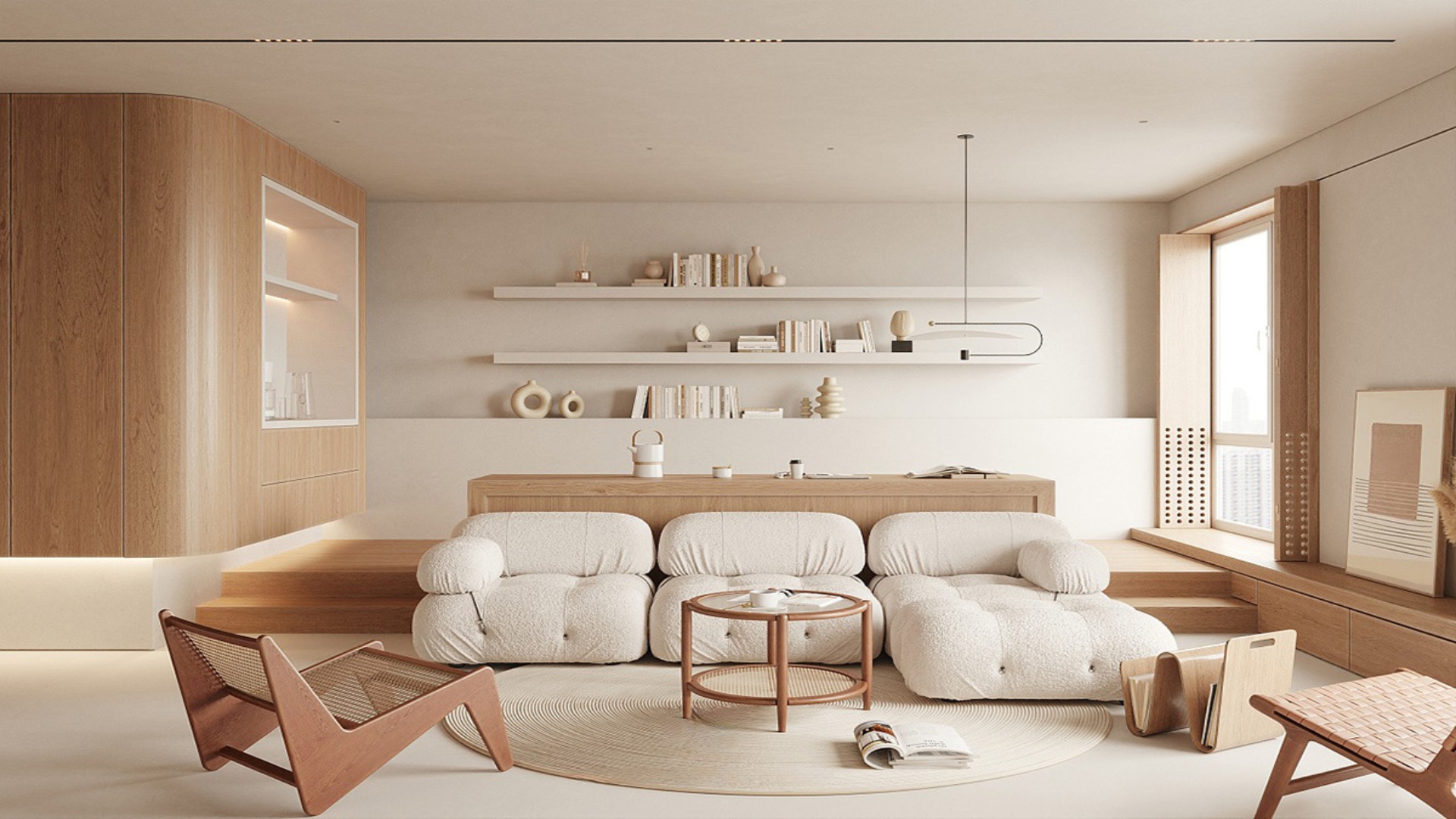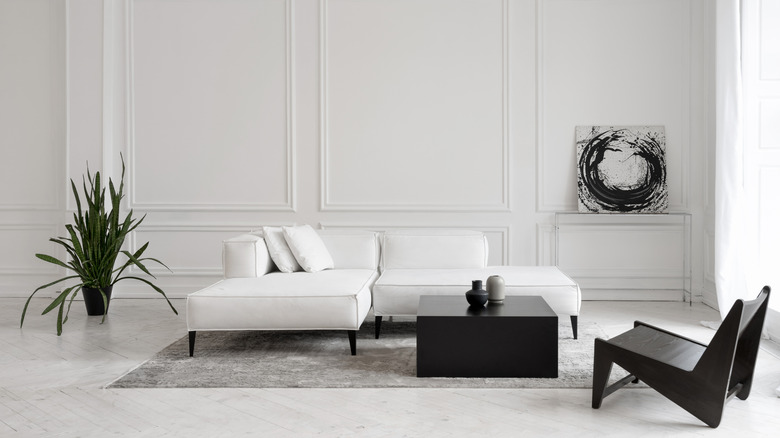Checking Out the Long-Term Impact of Minimalism on Psychological and Emotional Well-being
Checking Out the Long-Term Impact of Minimalism on Psychological and Emotional Well-being
Blog Article
Minimalism in Method: Reliable Strategies for Producing a Well Balanced and Intentional Home Environment
The technique of minimalism provides an organized technique to cultivating a home environment that shows intentionality and balance. By utilizing methods such as methodical decluttering and the "one in, one out" rule, people can not only minimize excess but likewise boost their mindfulness pertaining to material ownerships. In addition, integrating multi-functional furnishings and routinely reassessing items contributes to a room that resonates with individual values. Yet, the trip in the direction of maintaining a minimalist lifestyle involves even more than just these methods; it increases crucial concerns regarding exactly how we define need and the role of our surroundings in forming day-to-day experiences.
Comprehending Minimalism
Minimalism, often misunderstood as mere simpleness or a lack of belongings, encompasses an extensive approach that encourages individuals to pare down their lives to what absolutely matters. At its core, minimalism has to do with intentional living, cultivating a much deeper link with oneself and the surrounding atmosphere. This way of living advocates for the removal of excess, enabling people to concentrate on important values, experiences, and partnerships.
The minimalist technique prolongs past physical belongings; it urges individuals to examine their dedications, practices, and mental mess. By prioritizing high quality over amount, minimalists seek to create spaceâEUR" both literally and metaphoricallyâEUR" for what truly enriches their lives. This philosophy promotes mindfulness, prompting individuals to take part in thoughtful decision-making concerning their time, sources, and energy.
Recognizing minimalism requires a recognition of its transformative capacity. It is not merely a pattern but an intentional choice to accept simpleness and quality. Through this lens, individuals can cultivate a more deliberate presence, leading to enhanced health and fulfillment. Inevitably, minimalism works as a pathway to higher gratification, urging individuals to align their lives with their core worths and desires.
Decluttering Your Room
A cluttered environment can considerably affect psychological quality and overall wellness. To grow a serene and well organized space, it is vital to involve in an extensive decluttering process. Begin by assessing each area systematically, determining products that no longer offer a function in your life or line up with your worths. This process requires sincerity and discernment.
Beginning with smaller rooms, such as a cabinet or a corner of a space, and slowly development to bigger locations. As you sort through possessions, categorize things into three groups: keep, give away, and dispose of.
Integrate a timeline for your decluttering efforts to preserve energy. Establish attainable objectives, such as devoting 15 minutes day-to-day to the task. Once finished, consider executing a "one in, one out" regulation to avoid future build-up. By establishing a mindful method to your possessions, you develop an even more intentional space that cultivates clearness and enhances your general top quality of life. Welcome the liberty that comes with a decluttered home, permitting for a much more unified presence.
Curating Your Items
Curating your personal belongings includes a intentional and thoughtful method to what you select to maintain in your life. This procedure starts by reviewing each thing based on its utility, sentimental worth, and visual appeal. By asking vital questionsâEUR" such as whether an item offers a purpose or brings you joyâEUR" you can make informed choices concerning what genuinely deserves a place in your house.
To successfully curate your items, take into consideration developing classifications. Group items by function, sentiment, or frequency of use, which can assist clarify their functions in your every day life. This technique not just streamlines the option procedure yet additionally promotes a deeper admiration for the items you pick to retain.
As soon as you have actually determined your most valued products, concentrate on presenting them in such a way that improves their importance. Thoughtful plan can change daily objects right into meaningful prime focus, contributing to a intentional and serene setting.
Ultimately, the goal of curating your valuables is to cultivate an area that mirrors your values and lifestyle. By focusing on quality over quantity, you develop a harmonious atmosphere that promotes mindfulness and health in your home.
Designing for Performance
Designing for functionality needs a keen understanding of exactly how area and items connect within your home. Each thing needs to offer an objective, enhancing not only the aesthetic top quality of the setting but additionally its use.

Consider the flow of movement within each area, enabling natural changes in between rooms. This can be achieved with open formats or tactically positioned furnishings that motivates he has a good point blood circulation.
Utilizing vertical space can also blog here boost functionality; install shelves or wall-mounted storage space to keep floorings clear. Stress the importance of lighting, as it can considerably impact how useful a room really feels. By prioritizing utility and simplicity, you can produce a harmonious living atmosphere that supports both daily tasks and personal wellness.
Preserving a Minimalist Way Of Living
Developing a functional space is just the initial action towards welcoming a minimal way of life; the challenge lies in maintaining that simpleness gradually. To sustain a minimal method, routine assessment of possessions is necessary. This includes a periodic testimonial of things to identify their need and utility. Adopting the "one in, one out" guideline can effectively protect against accumulation; for every new thing introduced, an existing one must be gotten rid of.
An additional vital facet is mindfulness in usage. Being willful about acquisitions helps stay clear of impulse acquires that can clutter both physical and mental area. When purchasing, think about whether a thing includes genuine worth to your life or straightens with your minimal objectives.

Lastly, develop a supportive atmosphere by bordering yourself with similar individuals who value minimalism (Minimalism). Participating in conversations or joining minimal neighborhoods can offer inspiration and accountability, ensuring that simplicity stays a core principle in your every day life
Conclusion
To conclude, the practice of minimalism fosters a well balanced and intentional home environment through systematic decluttering, thoughtful curation of possessions, and the prioritization of capability in design. By taking on methods such as the "one in, one out" regulation and involving with encouraging neighborhoods, people can maintain a minimalist way of living. This technique not just reduces excess however likewise enhances mindfulness, eventually adding to useful site a much more purposeful and deliberate living experience.
Integrating multi-functional furniture and frequently reflecting on valuables adds to a room that reverberates with personal worths. By developing a conscious approach to your ownerships, you develop an even more intentional living space that fosters clarity and improves your general high quality of life.Designing for capability requires a keen understanding of just how room and objects engage within your home.Creating a practical room is only the first action towards welcoming a minimal lifestyle; the difficulty lies in maintaining that simplicity over time. Being intentional about purchases assists prevent impulse purchases that can clutter both physical and psychological space.
Report this page